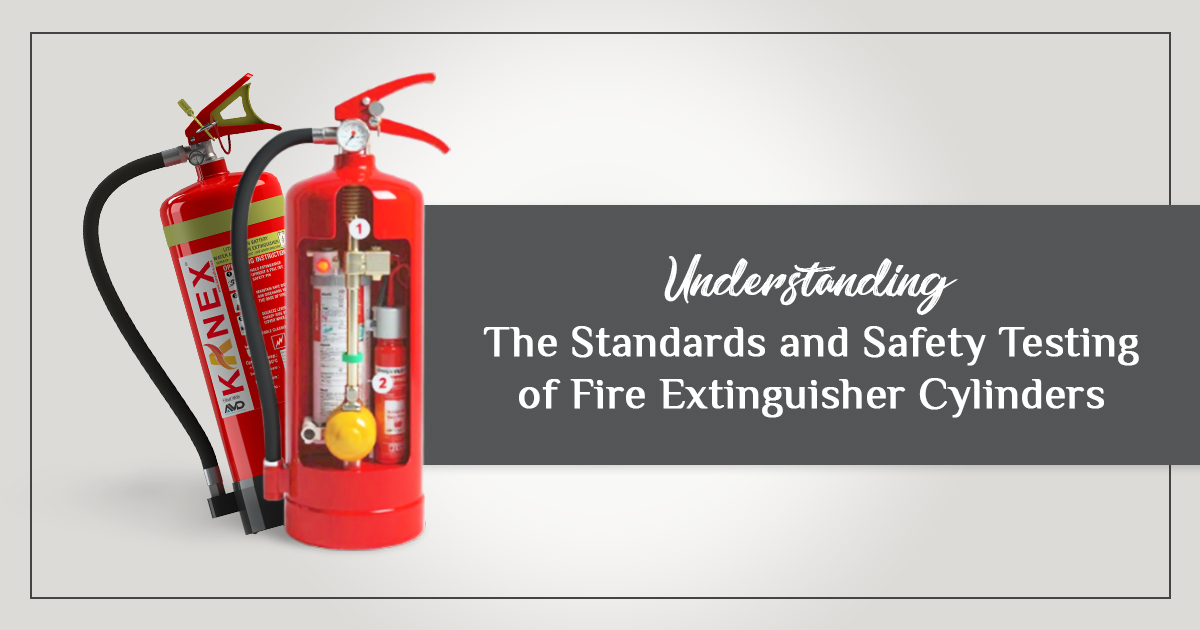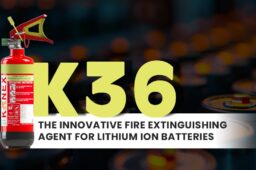Understanding the Standards and Safety Testing of Fire Extinguisher Cylinders
- June 20, 2025
How safe is your fire extinguisher?
Most people ignore the construction and testing of the fire extinguisher cylinder until they need it. But when it comes to fire safety, the integrity of the cylinder matters more than we might assume.
What’s Inside a Fire Extinguisher Cylinder?
Fire extinguisher cylinder is generally made of steel and aluminium. It’s a pressure vessel that must remain intact under specific circumstances. It’s built to handle the pressure of the gas or extinguishing agent inside.
Here’s what they usually include:
- The main cylinder body
- A valve and nozzle for releasing the agent
- A pressure gauge to monitor internal pressure (in stored-pressure models)
- A cartridge system (in cartridge-based models)
Every part has a job, and each one needs to hold up under pressure.
What Standards Do They Follow?
In India, fire extinguisher cylinders have to adhere to certain standards. IS 15683 is the most applicable one, which comes into play for portable fire extinguishers. IS 7285 for gas cylinders and regulations under PESO also come into play. All these standards encompass aspects such as design, pressure ratings, safety factors, and even labeling. We at Kanex Fire adhere to all of these standards to provide the necessary level of safety and quality of products.
How Are These Cylinders Made?
At Kanex Fire, we carefully manufacture each cylinder with precision and attention to detail. It begins with the forming of quality metal that is followed by welding, heat-treating, and coating it to give protection. We take care of all the steps to prevent any kind of tiniest flaw, including a bad weld or an irregular thickness.
What Safety Tests Are Done?
Before a cylinder goes out into the real world, it’s put through several safety tests, including:
- Hydrostatic test – to check if it can safely hold pressure
- Burst test – to find out when and how it would fail
- X-ray or ultrasonic tests – used for checking internal flaws
These tests are not one-time checks only. Each type of fire extinguisher has to undergo a hydrostatic test every 2 to 5 years. We follow all these standards strictly to manufacture each cylinder, which is further tested and certified to mark its quality.
Inspection and Maintenance Guidelines
A fire extinguisher inspection checklist generally covers:
- Pressure gauge reading
- Physical damage or corrosion
- Date of last hydrostatic test
- Pin and tamper seal condition
Regular inspections can catch small defects before they become serious problems.
Why Standards Compliance Matters
It’s not just a paperwork issue; if the cylinder fails during a fire, it risks people’s lives and also endangers your property. An untested or outdated extinguisher might not function properly when needed most.
At Kanex Fire, each fire extinguisher is thoroughly tested. We adhere to all the fire safety standards in India, not only to comply with the law, but to make sure the extinguisher will work under any critical situation!
Just take a quick look at your fire extinguisher. If the inspection date is old or there’s any sign of damage, it’s probably time to do something about it. Better to be safe than sorry.
To explore more about what’s inside fire extinguishers and the types of extinguishing agents used, check out our in-depth blog: What’s Inside Fire Extinguishers – Exploring the Extinguishing Agents









